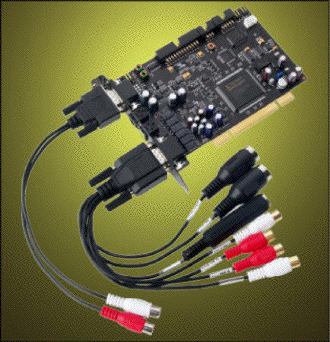
The RME Hammerfall DSP 9632 PC Sound Card
Page 2
If the content police are ready to drag grandma and her wheelchair into court along with eight-year old girls in braces and line them up against the copyright wall, what do you think this portends when your entire AV system comes under the control of HDMI-HDCP? Never mind that HDMI audio-only playback is a kludge of the first order, leaving you with no or limited digital audio playback options.
HDMI offers a number of come-ons to sign up for its draconian copy protection scheme, including single A/V cable hookup, and HDMI 1.3a offers new extra high quality sound formats and support for billions of colors. In 2008 CE gear, HDMI 1.3a will rule.
But hey, what about your existing non-HDMI belongings? Just toss all your DVI components into the trash, along with your recently foreclosed crib? And living out of your car has even got expensive, as gas heads northwards of $4 a gallon. So who has the extra dough to buy all this new A/V stuff with HDMI 1.3a?
Hence, the great appeal of using a DVI output and its cable to send the video and a separate S/PDIF output and cable to carry the 2-channel and multi-channel audio portion. How long this 2-part A/V setup will last is anybody’s guess as the Hollywood content death squads will be looking to kill it ASAP, but there should be at least several more years of life in it.
For a good example as to why this DVI-S/PDIF setup will remain necessary, the motherboard I used in a recent DIY PC story, a Biostar TF7050-M2, only supports 2-channel audio over its built-in HDMI connector--no multi-channel sound available.
Worse, this Biostar product only supports S/PDIF via an optional card that hooks into a connector on the motherboard But the Biostar package I had did not come with this optional S/PDIF card. This connector fiasco only drives home the point that using add-in audio PC cards with S/PDIF outputs will be needed for some time to come.
As important, instead of junking everything at once, you can upgrade individual A/V and graphic cards and DVD transports in your DIY PC as your budget allows.
Right now, my money and yours, too, should be on using the great PC audio cards from RME Audio, a German company with US distribution via Synthax (http://www.synthax.com). RME really knows audio. For example, I tested RME’s Hammerfall DSP 9632 PCI card, which the company touts as “the world's most versatile PCI Audio Interface”.
The RME 9632 card features the 192 kHz AD- and DA-converters with more than 110 dB signal to noise ratio, and all of its inputs and outputs are simultaneously operational.

21st, The VXM Network, https://vxm.com